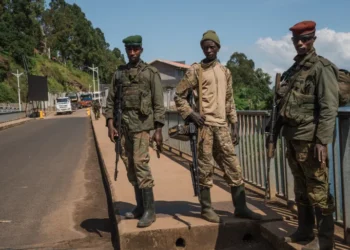Health officials across Africa are on high alert as Congo grapples with an unexplained illness that has claimed dozens of lives in recent weeks.
Congo’s health minister, Roger Kamba, confirmed 71 deaths linked to the mystery disease in the southern Kwango province, with nearly 380 suspected cases, nearly half of which involve children under five.
Jean Kaseya, head of the Africa Centers for Disease Control and Prevention (Africa CDC), stated that early diagnostics suggest the illness may be respiratory in nature.
However, he urged patience, emphasizing that laboratory results expected within 48 hours would provide definitive answers.
“There are so many things we don’t know,” Kaseya said. “This includes whether the disease is infectious and how it is transmitted.”
The epicenter of the outbreak, Panzi health zone, lies roughly 435 miles (700 kilometers) from Congo’s capital, Kinshasa. Access to the area is difficult due to its remoteness and underdeveloped infrastructure. Epidemiological experts required two days to reach the site, and testing capacity remains limited.
Samples from affected individuals had to be sent to Kikwit, a city more than 500 kilometers away, for analysis. Dieudonne Mwamba, head of Congo’s National Institute for Public Health, noted the region’s fragile state, compounded by existing challenges such as malnutrition and a recent typhoid epidemic.
“The health system is quite weak in our rural areas. But for certain types of care, the ministry has provisions in place as we await the first test results to better understand the situation.”
Jean Kaseya
Panzi residents have reported troubling symptoms, including fever, headaches, cough, and severe anemia. Claude Niongo, a local resident, lost his wife and seven-year-old daughter to the illness.
“We do not know the cause, but I noticed high fevers, vomiting… and then death,” Niongo said. “Authorities are now talking about an epidemic, but in the meantime, there is a problem of care, and people are dying.”
The local hospital in Panzi is struggling to manage the influx of patients. According to Lucien Lufutu, president of the civil society consultation framework of Kwango province, the facility is severely under-equipped.
“There is a lack of medicines and medical supplies. Since the disease is not yet known, most of the population turns to traditional practitioners,” Lufutu explained.
Contextual Challenges Compound Crisis
Kwango province faces overlapping health crises, with 40% of residents in Panzi suffering from malnutrition and a resurgence of seasonal flu. The combination of these factors complicates efforts to isolate and address the mystery illness.

Additionally, Congo continues to battle other public health emergencies. The country is dealing with an mpox epidemic, reporting over 47,000 suspected cases and more than 1,000 deaths, according to the World Health Organization.
Despite these challenges, officials are working to contain the disease’s spread. Kamba acknowledged reports of the illness affecting Katenda, a nearby health zone, but stated there is no confirmation of its presence in other areas.
As Congo’s health authorities await laboratory results, Africa CDC has highlighted discrepancies in reported figures. While Congo’s health ministry reports 71 deaths, Africa CDC recorded 79 fatalities from 376 cases. Kaseya attributed the variation to issues with surveillance and case definitions.
Public health experts emphasize that early detection and containment are crucial. However, limited resources and logistical hurdles pose significant challenges.
“We need to take into account all this as context,” Mwamba said.
For the affected communities in Kwango, the situation remains dire, with limited access to medical care and growing uncertainty about what lies ahead.
READ ALSO: NDC Makes Final Call for Change to Reset Ghana for a Brighter Future























